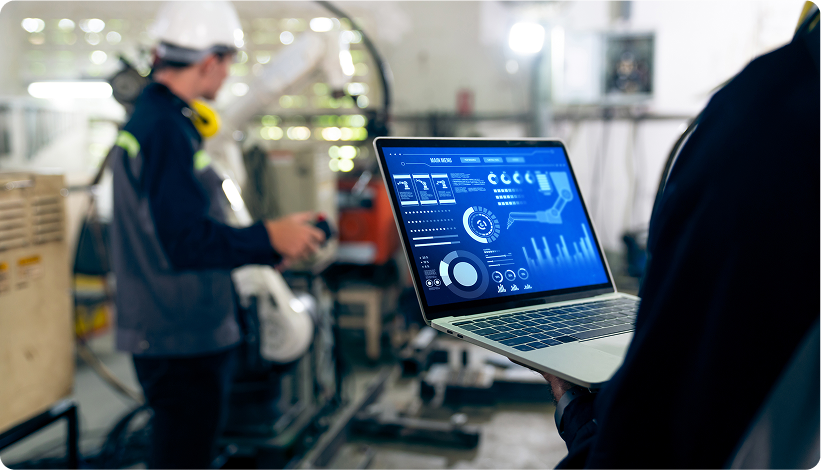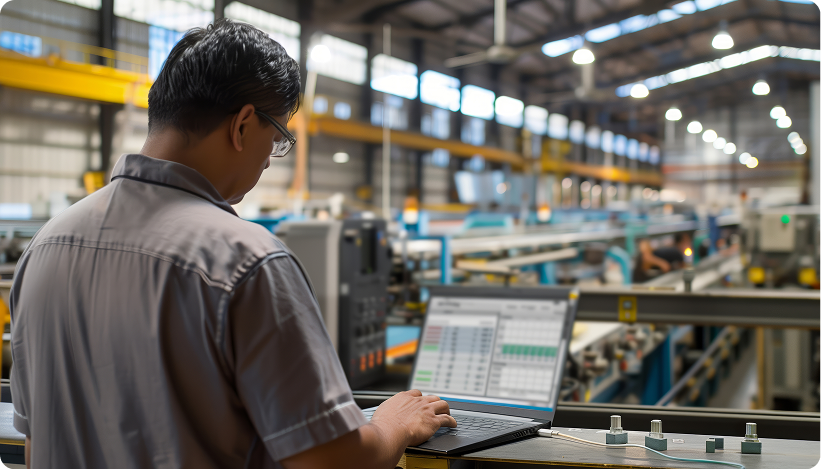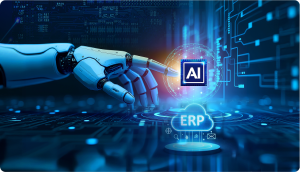
Introduction: Why Quality Issues Still Slip Through in Modern Manufacturing
Walk into any modern factory today and you’ll see high-tech machines, automated lines, and strict processes that look almost foolproof. So, you’d think product defects should be a thing of the past. But in reality, defects still find a way through, and when they do, they can turn into costly headaches down the line.
The truth is, manual checks can’t keep up with today’s fast production lines. Inspectors get tired, small mistakes go unseen, and hidden flaws are easy to miss. This is why defect detection needs something smarter.
That’s exactly what Artificial Intelligence (AI) brings to the table. AI checks products faster, spots tiny defects people might miss, and learns from every inspection. This means problems get caught early, saving time, money, and brand reputation.
What Manufacturing Firms Often Miss in Quality Control
So, what do factories usually overlook that causes defects? Here are some common things they miss:
Relying Too Much on Manual Checks
Many factories still depend on people to find flaws. Workers do their best, but checking parts all day can be tiring and boring. When people get tired or distracted, they can miss small problems like tiny scratches, misalignments, or cracks.
Defects That Are Hard to See
Not every defect is easy to spot. A small crack inside a part, a tiny chemical issue, or a hidden vibration problem can’t be seen with the eye alone. Without smart defect detection tools, these hidden flaws can move down the line and reach the customer.
Inspection Data That Isn’t Connected
Quality checks happen at different steps, during production, at the end, or even after shipping when customers complain. But often, this information stays scattered. If the data isn’t shared properly, it’s hard to find patterns or figure out what’s really causing defects.
No Way to Fix the Root Cause
Sometimes factories fix the defect they see but don’t look deeper to find out why it happened. Maybe the pressure was too high, or a machine was slightly off. Without a system to connect these dots, the same defect can keep happening repeatedly.
The Cost of Missed Defects and Inconsistent Inspection
Missing defects doesn’t just mean a bad product, it can hurt a company’s money and reputation in a big way.
Product recalls and rework:
When a defect reaches the customer, the company often has to recall the product. This means paying for repairs, replacements, shipping, and extra work to fix parts. Did you know? A single product recall in the auto industry can cost millions of dollars, for example, major car brands have spent billions fixing faulty airbags and brakes.
Losing customer trust:
One poor-quality product can make a customer switch to a competitor. Studies show that over 50% of customers won’t buy again from a brand after one bad experience with product quality.
Regulatory risks:
Industries like pharma, automotive, and electronics must follow strict safety rules. If a defect slips through, companies can face heavy fines or lawsuits. For example, some pharmaceutical recalls have cost companies hundreds of millions, and trust is hard to win back.
More waste, higher costs:
Defects waste materials, energy, and time. It’s estimated that poor quality can cost manufacturers up to 20% of their total sales in scrap, rework, and lost business.
This is why smart defect detection isn’t just about catching mistakes, it’s about saving money, protecting people, and keeping the brand’s name strong.

How AI Transforms Quality Inspection and Defect Detection
This is where AI really helps factories do better. AI-powered quality checks can handle things that manual inspections can’t. Here’s how it works:
Checking Visual Defects with Computer Vision
One big way AI helps with defect detection is by using computer vision. This means smart cameras look at every product closely.
These AI cameras are trained with thousands of pictures of scratches, dents, missing parts, and misalignments. Once trained, they can scan products super-fast on busy production lines.
They never get tired or lose focus. Even tiny flaws that people might miss show up right away on a screen for workers to review. This means fewer bad products reach the customer.
Finding Hidden Defects with Sensors
Not every defect can be seen with just eyes or cameras. Some flaws hide inside.
AI uses special sensors to help find these hidden problems:
- Acoustic sensors listen for strange sounds inside parts.
- Thermal cameras find hot spots that could mean a crack.
- Vibration sensors feel small shakes that show something’s wrong.
AI takes all this sensor data and uses it for real-time defect detection. This is very useful for industries like cars, planes, and electronics, where hidden defects can be dangerous and very costly.
Real-Time Problem Alerts
Another big plus of AI is speed. Unlike manual checks that happen only sometimes, AI watches every single product in real time.
When AI finds a problem:
- It alerts a worker right away.
- Some smart systems can even reject the faulty product automatically or stop the line before more bad parts are made.
Fixing problems immediately saves money and keeps waste low.
Learning and Improving Processes
AI doesn’t just find defects, it also learns from them.
If it sees the same type of defect repeatedly, AI can figure out what’s causing it. For example:
- Maybe the machine’s heat is too high.
- Maybe a tool is not lined up right.
Then AI can suggest how to fix these issues. Over time, this feedback helps factories adjust machines and settings to stop defects from happening in the first place.
Works Well with Existing Factory Systems
Many factories worry about adding new tools. The good news is modern AI tools are built to fit right into what factories already use, like:
- MES (Manufacturing Execution Systems)
- QMS (Quality Management Systems)
- ERP (Enterprise Resource Planning) software
This means all inspection data moves smoothly between production, quality, and maintenance teams. Every product batch has a clear, digital record, which makes audits, reports, and following the rules much easier, all while improving defect detection.
Enhancing Human Expertise with AI
AI doesn’t replace humans, it makes them better. By taking over repetitive inspection tasks, AI frees up quality teams to focus on more complex decisions that need human judgment.
When AI flags a defect, it can show heatmaps or scores explaining what’s wrong. This makes it easier for inspectors to double-check and decide what to do next. Plus, less repetitive checking means less fatigue and more accurate results.

Key Benefits and ROI for Manufacturing Firms
So, what does all this mean for manufacturers in the real world? The payoff of AI-powered defect detection is big.
- Fewer defects: Better detection means fewer faulty products and higher First Pass Yield.
- Faster inspections: AI checks parts much faster than manual inspections, even on fast lines.
- Lower returns and recalls: Early detection means fewer customer complaints and costly recalls.
- Smarter root cause analysis: AI gathers data that helps teams find and fix root causes, not just symptoms.
- Higher efficiency: Less waste and fewer reworks mean machines and teams work at their best.
Real-World Application Scenarios
Here are a few real examples that show AI-powered defect detection in action:
- Automotive: Car makers use computer vision to catch surface cracks or paint defects on body panels before final assembly.
- Electronics: PCB manufacturers use AI to spot faulty solder joints using thermal images and visual checks.
- Consumer goods: AI checks for scratches or dents on packaged products before sealing and shipping them.
- Beverages: Bottling plants use AI to ensure bottles are filled to the right level and caps are properly sealed.
These examples show that AI works across industries, from cars to chips to shampoo bottles.
Ensuring Data Privacy, Model Accuracy, and Scalability
Of course, using AI means handling a lot of data. Manufacturers need to keep that data secure and make sure AI models stay accurate.
Good practice includes storing data securely, retraining AI models regularly with fresh defect samples, and monitoring performance to catch any drift.
Companies also balance whether to process data at the “edge” (directly on the production line) or in the cloud. Edge AI offers fast response times for real-time defect detection, while the cloud allows deeper analysis and model updates.
Conclusion: Move from Sample Checks to 100% AI-Powered Inspection
In the past, many factories relied on random sampling, pulling a few units off the line for checks. But today’s market demands higher quality, faster production, and zero surprises.
AI enables manufacturers to inspect 100% of products, in real time, with unmatched consistency. It spots hidden flaws, reduces waste, and protects the brand’s name.
By adopting AI-powered defect detection, factories can spend less time fighting quality fires and more time building better products, faster, smarter, and with confidence that every unit that leaves the floor meets the mark.
Ready to say goodbye to random checks and hello to zero-defect manufacturing? Contact us today and see AI quality control in action



